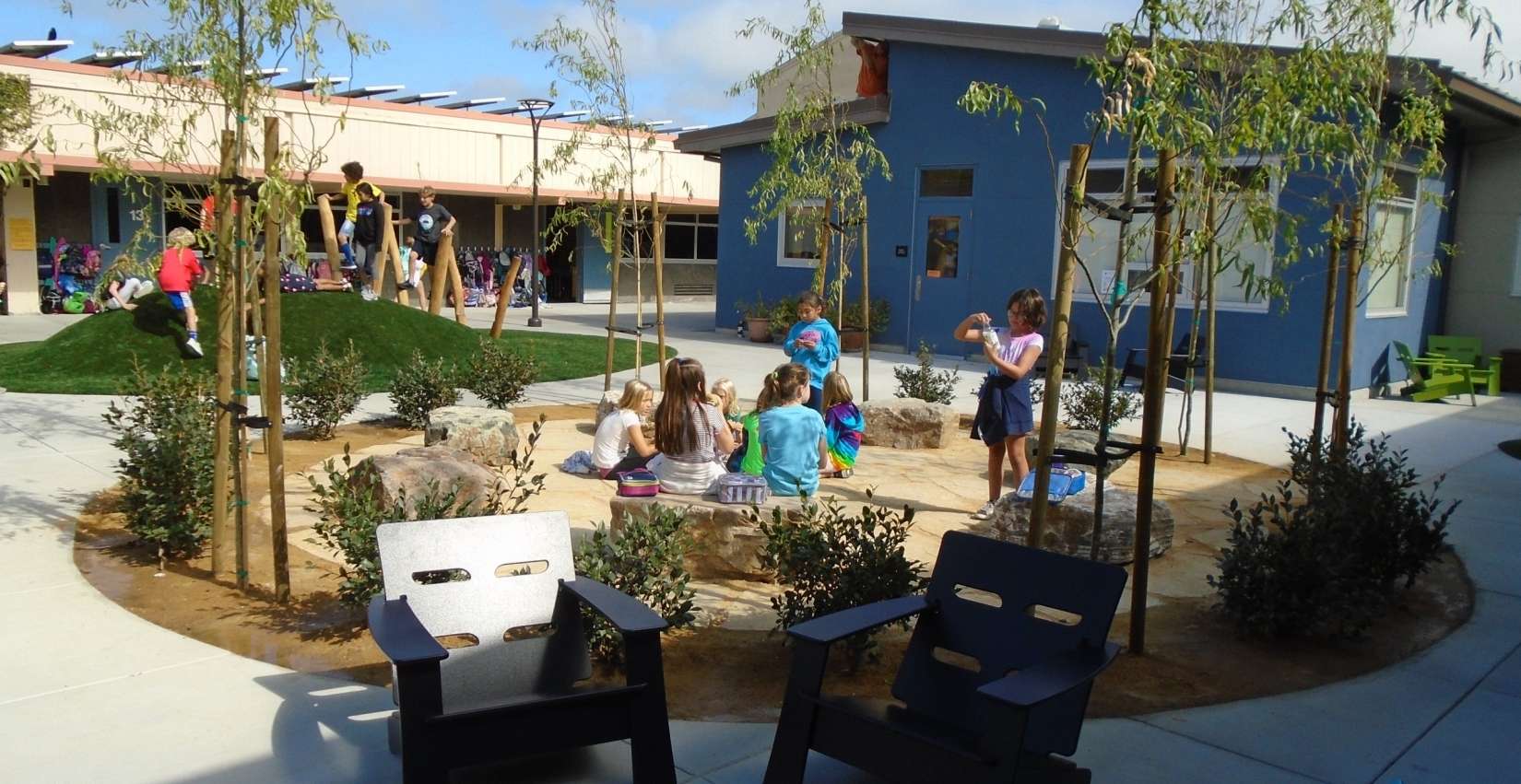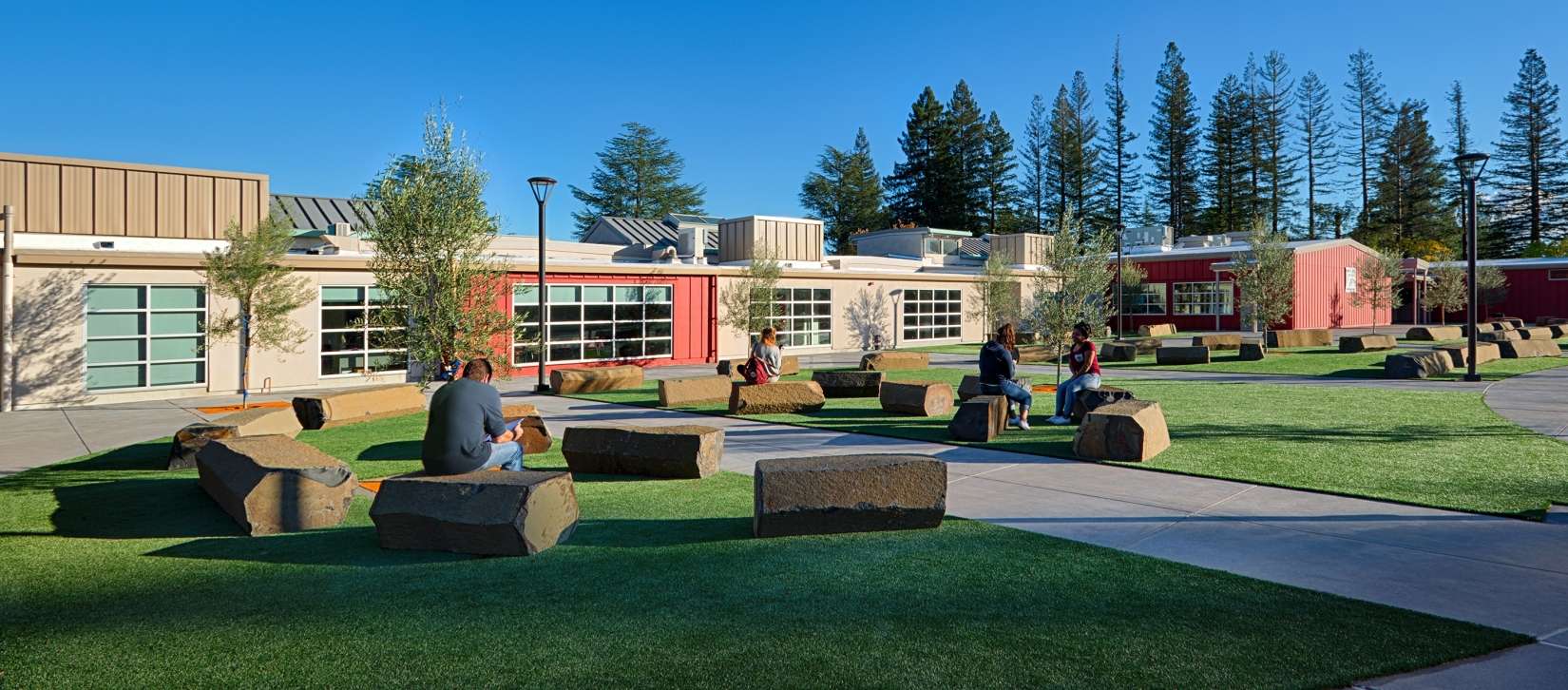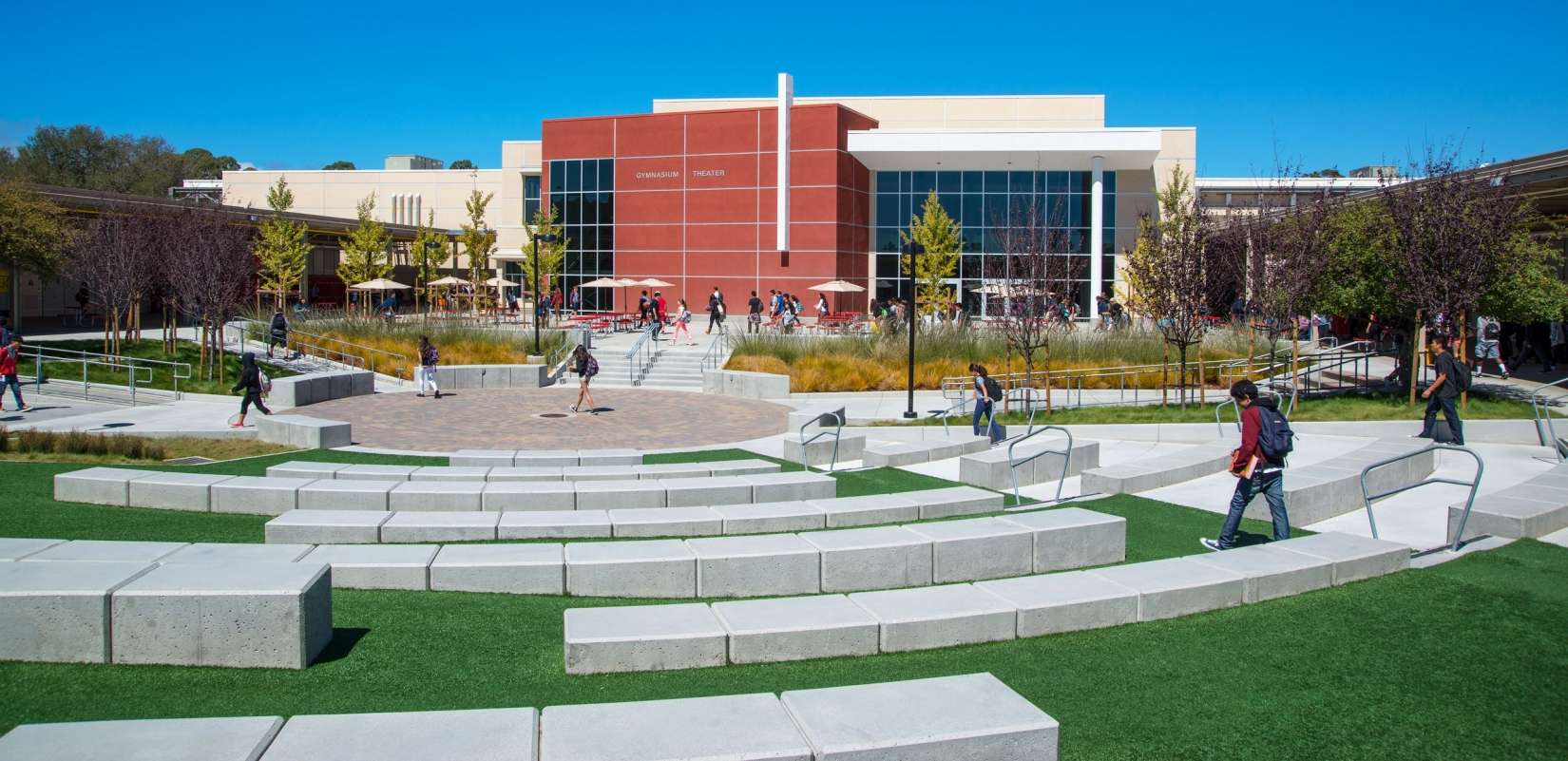Looking Ahead / Outdoor Learning
COVID-19 has accelerated the dialogue about leveraging outdoor learning environments for school districts in California. Carducci Associates, with our extensive DSA approved landscape experience, has been assisting clients to strategize and implement solutions quickly and easily to create safer spaces for the upcoming year, and also to envision the potential for maximizing outdoor learning (post-pandemic). California’s temperate and mild climate often provides ideal conditions for outdoor-education activities for much of the year. In light of the recent pandemic, which requires physical distancing and increased air-circulation to lessen the chance of transmission among students, the outdoor classroom has become an optimal setting and option to accommodate – and allow for a greater number of– students returning in the fall.
UTILIZING THE OUTDOORS AS AN ASSET:
Outdoor spaces offer an economical way to alleviate the spatial constraints of the pandemic on indoor classrooms while also providing: hands-on learning, fresh air, and opportunities for children to connect with the natural environment. Below are some of the lessons we have learned from educators and designers who have already brainstormed and navigated this process. Following these lessons are additional resources to guide community members to understand the strategies shared and also to re-imagine how to see these constraints as growth opportunities for the future of education in California.
LESSONS LEARNED:
1. Understand that enhancing the connection to nature improves student/faculty health and well-being
2. Engaging school grounds and local parks as outdoor classrooms to expand the capacity for students
3. Creating Cohorts to discuss (weekly) research
4. Provide flexibility and choice: Consider a variety of seating in varied layouts
5. Understand whether strategy/implementation is a short-term transition or a long-term investment
6. Take initiative, pilot, evaluate, implement
7. Engage students in the problem-solving process
8. Develop a phased approach to reopening
9. Create an outdoor, bookable meeting-space system (e.g. Stanchion off an area for reserved meetings on campus and provide signage that can be updated with the current user(s) name and duration of use)
10. Discern “higher-usage” areas on campus and provide supplemental outdoor structures to accommodate these densities
11. Improve micro-climate or consider climatic variables to lengthen (maximize) the usage of outdoor spaces in the shoulder seasons (e.g. equip shade structures with heating, cooling or lighting, provide windbreaks, consider acoustics and how to reduce noise to other outdoor classrooms, consider sun movement, temporary and/or permanent DSA-PC approved shade sails, sun umbrellas, etc.)
12. Address infrastructural needs: potential utilities and accessibility needs that will need to be considered when people congregate in different places on campus/school grounds (Wi-Fi, emergency systems, blue lights-visibility accessibility, power charging, increased hand washing stations, etc.)
13. Consider developing zones, especially on larger school campuses, that prioritize access to different user groups (students, faculty, visitors, other community members, etc.)
14. Develop toolkits and resources to educate the school community (provide adequate signage in a variety of sizes, distribute outdoor space guidelines for the diverse types of public spaces on campus, etc.)
15. Consider low-cost, temporary materials to create outdoor classroom spaces
16. Organize outdoor pop-up activities to support student life and foster community (outdoor games, dining, art, etc.)
17. Consider having areas and spaces for both formal (classes, seminars) and informal/casual activities (clubs)
18. Security is paramount, consider ways to restrict access to grounds to ensure safety
19. Consider funding from CARES ACT for educational work and American Association of Dermatology grants for shade
20. For equity make outdoor learning a priority and online learning a back up
RESOURCES:
1) National COVID 19 Outdoor Learning Initiative: Essential Assets for School District COVID-19 Response
2) The Outdoor Classroom Project: Characteristics of the outdoor classroom and information regarding the physical, cognitive, psychological benefits of outdoor learning
3) COVID-19 Planning Considerations: Guidance for School Reentry
4) Planning Outdoor Infrastructure at your School (Free Downloadable Resources)
5) San Francisco Children & Nature: a San Francisco collaborative dedicated to ensuring all youth growing up in the city have the same opportunities to PLAY, LEARN and GROW in NATURE.
6) Emergency Schoolyard Design Volunteers: a new program dedicated to match schools and districts with volunteer design teams to help plan and lay out outdoor classrooms. Click here to sign up for design assistance. Designers click here to sign up to assist schools.
7) Fast Company: “Inside the Quest to Reopen Schools—by Moving Classes Outside”
8)The Atlantic: “Why Can’t We Have Class Outside? It might be the answer to America’s school-reopening problem”
9) PBS Newshour Weekend: “A California Collective Makes the Case for Outdoor Learning” (video)
10) Adapting College and University Campus Outdoor Spaces in Response to COVID-19 (ASLA Professional Practice Webinar) (video)



Press Release